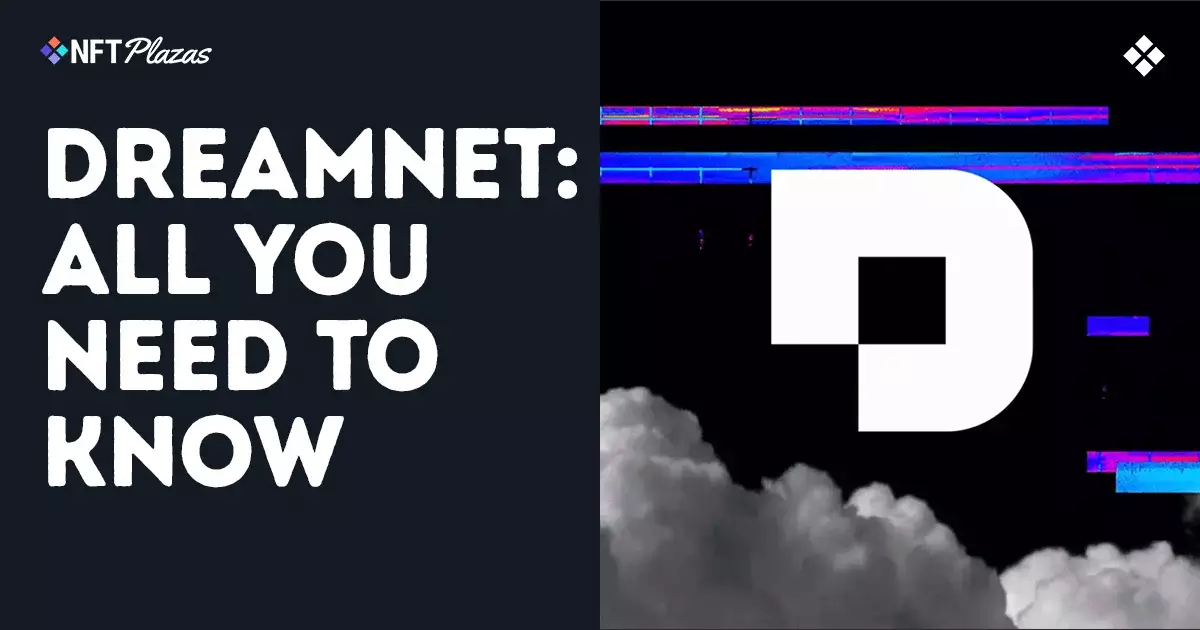In an era where technology and artistry often seem at odds, DreamNet emerges as a bold attempt to bridge that divide through blockchain-powered storytelling. Developed by the creators behind the renowned Doodles NFT collection, DreamNet aims to create a decentralized universe where human imagination is rewarded and amplified by artificial intelligence. At first glance, this concept sounds groundbreaking—combining AI’s capacity for narrative expansion with community-driven participation, all underpinned by blockchain integrity. Yet beneath this shimmering veneer lies a complex web of challenges, assumptions, and a hefty dose of optimism that needs to be critically examined.
The core premise of DreamNet revolves around incentivizing creativity. Human contributors—artists, writers, fans—offer characters, plotlines, geography, and lore, which AI then further develops. The platform’s architecture features a blockchain ledger called WorldState that tracks contributions, engagement, and rewards, embodying a vision of democratized storytelling. This setup aims to empower community members, not just content creators, by providing a fair, transparent system of compensation based on audience reception, all handled through the native token, $DOOD.
This ambitious infrastructure, however, presupposes a robust and active community willing to invest genuine creative effort with the promise of rewards. It also banks on the seamless integration of AI to elevate human ideas rather than overshadow or dilute them—a delicate balance that has historically been elusive. While the idea of incentivized creative collaboration is compelling, skepticism arises when considering whether the platform can maintain quality, foster sustained engagement, and avoid the pitfalls of superficial contributions driven by token incentives rather than authentic inspiration.
Potential Pitfalls and the Reality of Blockchain-Driven Creativity
Despite its visionary appeal, DreamNet’s reliance on blockchain technology introduces a suite of potential complications. The platform’s decentralization is a double-edged sword. While decentralization promises transparency and community control, it also raises questions about governance, moderation, and quality assurance. Will the contribution system be susceptible to spam, trolling, or gaming? How will it differentiate between meaningful creativity and superficial engagement? Blockchain’s inherent characteristics make it difficult to moderate or steer content effectively, especially in the absence of centralized oversight.
Moreover, the success of DreamNet hinges critically on user adoption. The initial access is limited to Doodles NFT holders through a closed beta, creating a controlled environment that might foster exclusivity but may also restrict broader community engagement early on. This selective rollout risks alienating potential users who are not Doodles owners but could bring valuable fresh perspectives. Eventually, for DreamNet to flourish, it must transcend its initial niche and appeal to diverse communities, which is no trivial task in a crowded and competitive digital universe.
Additionally, the platform’s reliance on AI as an expanding tool for narratives introduces questions about originality and human touch. Can AI genuinely capture nuance, emotion, and originality that resonates deeply with audiences? Or will AI-generated content risk becoming formulaic or soulless, undermining the very human creativity it aims to reward? An over-reliance on AI might inadvertently commodify storytelling, turning it into an assembly line of creations, thereby diluting artistic integrity.
The economic model centered around $DOOD tokens raises further concerns. While token incentives motivate contributions, they can also lead to volatility, speculative behaviors, and economic disparities among contributors. If the rewards are based heavily on audience reception, popular ideas will flourish while less immediately appealing but potentially innovative concepts remain marginalized. This dynamic risks reinforcing existing cultural biases and echo chambers rather than fostering genuine creative diversity.
The Larger Cultural and Market Implications
From a broader perspective, DreamNet embodies a trend toward democratized entertainment and community empowerment. If successful, it could shift the power dynamics in storytelling away from large studios and centralized IP holders toward a more decentralized, participatory model. This shift aligns with the center-right liberal worldview that values individual initiative and marketplace-based incentives but warrants scrutiny regarding potential commercialization and corporatization.
The vision of expanding existing worlds like Doodles into vast narrative universes is provocative, offering fans and creators a new playground for interaction. Yet, it also risks commodifying fandom, reducing it to a marketplace of ideas rather than a space for genuine dialogue or artistic exploration. Will this ecosystem foster meaningful cultural development, or will it become just another platform driven by profit motives and fleeting trends?
Furthermore, the platform’s integration into broader Web3 ecosystems could set a precedent for how creative IPs are managed, expanded, and monetized in the blockchain age. While this promises transparency and community involvement, it also raises questions about perpetuating exclusivity and speculatory behaviors that many critics argue threaten the long-term viability of decentralized projects.
Ultimately, DreamNet’s true test will be whether it can sustain authentic engagement, incentivize meaningful contributions, and withstand the volatile tides of emerging technology and marketplace interests. Its success depends on balancing innovation with responsibility, decentralization with quality, and automation with genuine human emotion. If it manages this delicate equilibrium, DreamNet could indeed revolutionize digital storytelling. If not, it may become yet another ambitious project lost in the vast sea of blockchain gimmickry, overwhelmed by hype and underwhelming execution.


Leave a Reply